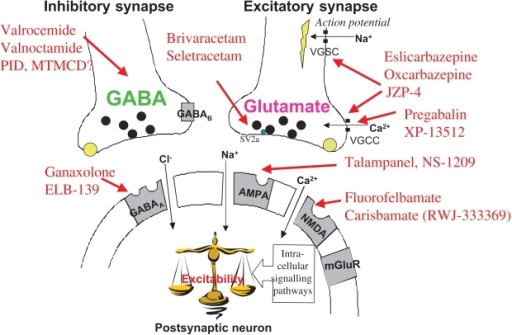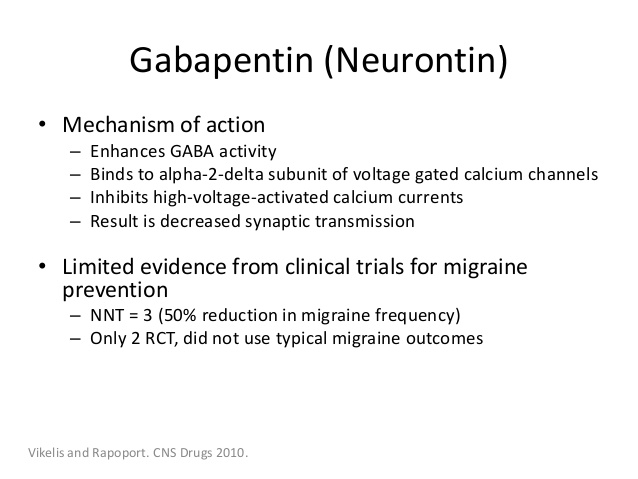The mechanism of the anticonvulsant action of gabapentin has not been fully described. Though similar in structure to the endogenous neurotransmitter GABA, gabapentin has not been shown to bind to GABA receptors at concentrations at or below 1 mM.

Gabapentin modulates the action of glutamate decarboxylase (GAD) and branched chain aminotransferase (BCAT), two enzymes involved in GABA biosynthesis.
In human and rat studies, gabapentin was found to increase GABA biosynthesis, and to increase non-synaptic GABA neurotransmission in vitro.
Gabapentin (0.01-100 µM) has not been shown to interact with the sodium or L-type calcium ion channels targeted by the conventional anticonvulsant drugs phenytoin, carbamazepine and sodium valproate.
Other neurophysiological findings indicate that gabapentin does not interact with glutamate, glycine, or NMDA receptors, further distinguishing its anticonvulsant mechanism from that of common antiepileptic medications.
Gabapentin readily enters the brain and prevents seizures in a number of animal models of epilepsy. Gabapentin does not possess affinity for either GABAA or GABAB receptor nor does it alter the metabolism of GABA. It does not bind to other neurotransmitter receptors of the brain and does not interact with sodium channels. Gabapentin binds with high affinity to the α2δ (alpha-2-delta) subunit of voltage-gated calcium channels and it is proposed that binding to the α2δ subunit may be involved in gabapentin’s anti-seizure effects in animals. Broad panel screening does not suggest any other drug targets other than α2δ.
Evidence from several preclinical models inform that the pharmacological activity of gabapentin may be mediated via binding to α2δ through a reduction in release of excitatory neurotransmitters in regions of the central nervous system. Such activity may underlie gabapentin’s anti-seizure activity. The relevance of these actions of gabapentin to the anticonvulsant effects in humans remains to be established
Gabapentin also displays efficacy in several preclinical animal pain models. Specific binding of gabapentin to the α2δ subunit is proposed to result in several different actions that may be responsible for analgesic activity in animal models. The analgesic activities of gabapentin may occur in the spinal cord as well as at higher brain centers through interactions with descending pain inhibitory pathways. The relevance of these preclinical properties to clinical action in humans is unknown.


